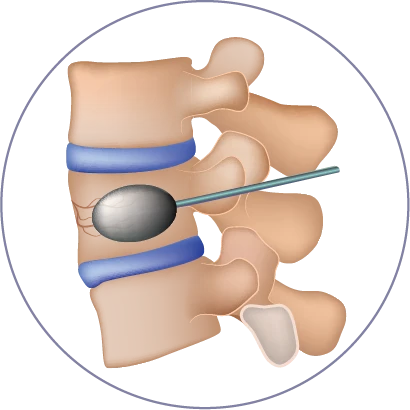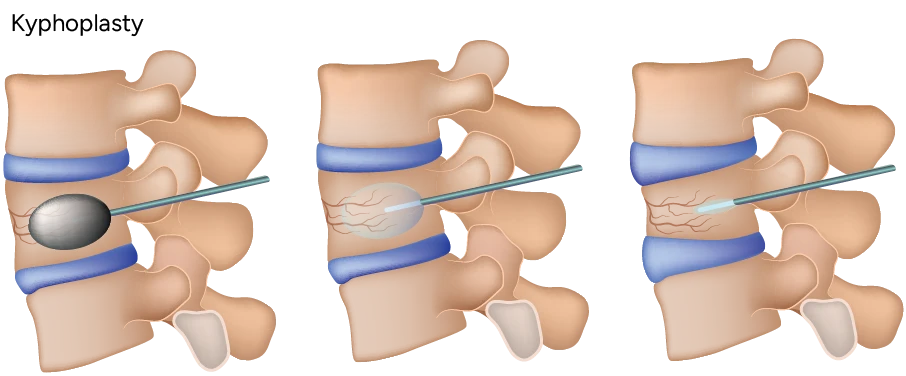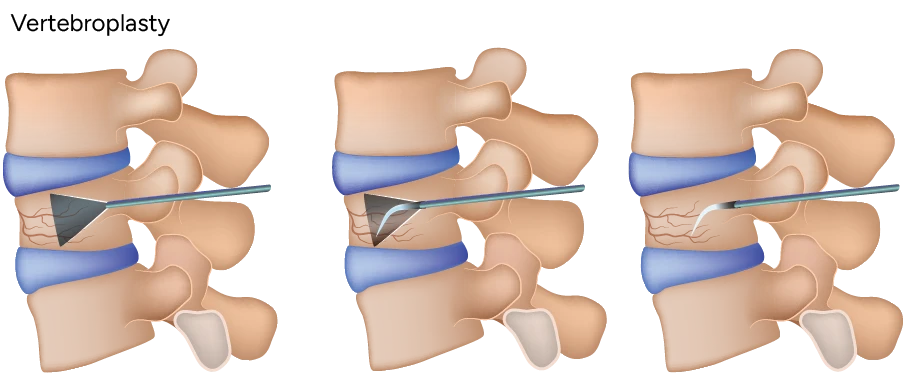Spine Fracture Treatment
Kyphoplasty and vertebroplasty, also known as vertebral augmentation, are minimally invasive, nonsurgical treatments for spinal compression fractures. These procedures help reduce pain, improve mobility, and stabilize fractures, allowing patients to return to their normal daily activities.


How Do These Procedures Work?
Using imaging guidance, your interventional radiologist will advance a small metal tube into the fractured vertebral body through a tiny incision, just a few millimeters wide. In kyphoplasty, a balloon is first inflated inside the spine to create a small cavity, and in some cases, restore some of the lost height of the vertebra. The balloon is then removed, and surgical cement is injected to stabilize the fracture. Vertebroplasty is similar but skips the balloon step, with the cement injected directly into the fracture to provide immediate stabilization.
Clinical trials have shown that both procedures are effective at reducing pain and helping patients regain their mobility.


Who is a Good Candidate for Kyphoplasty or Vertebroplasty?
If you’re experiencing pain from a spinal compression fracture, you may be a candidate for these procedures. An MRI of the spine showing an acute fracture or edema can help confirm this, but it’s not always required. Our board-certified interventional radiologists will evaluate your condition during a consultation to determine if these treatments are right for you.
What Happens During the Procedure?
Both kyphoplasty and vertebroplasty are outpatient procedures performed in our angiography suite. Under moderate sedation or general anesthesia, your radiologist will make a small incision in the back and insert a metal tube into the fractured vertebra using real-time imaging guidance. Surgical-grade cement is then injected into the fracture. In kyphoplasty, a balloon is used to create a cavity for the cement and, in some cases, restore vertebral height.
What to Expect After the Procedure
Recovery is typically quick, with most patients able to go home the same day. You’ll have a small bandage over the incision, and most patients can return to normal activities, including physical therapy, within one day. Significant pain relief is often experienced within 1-2 weeks, though some patients feel relief within just a few days.
Request an appointment
Schedule a consultation with our expert interventional radiology team to learn more and find out if this innovative treatment is right for you.